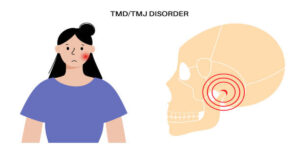When we face misunderstandings, errors, or unexpected situations, human instinct often pushes us toward assuming intentional wrongdoing. Whether in personal relationships, workplace conflicts, or social media debates, it is tempting to conclude that someone’s actions were driven by ill will. Yet, there is an enduring principle that urges us to think twice before making that judgment: “Never attribute to malice that which is adequately explained by stupidity.” This idea, widely recognized as Hanlon’s Razor, offers not just a clever saying, but a powerful mental tool for navigating human interactions with more clarity, patience, and fairness.
In this comprehensive article, we will explore the origins, meaning, psychological foundation, and practical applications of the “Never Attribute to Malice” principle, along with how it can transform the way we interpret human behavior. We will also examine its limitations, give structured examples, and see how it compares to other mental models.
1. Understanding the Core Meaning
The phrase “Never attribute to malice that which is adequately explained by stupidity” suggests that we should resist jumping to conclusions that someone acted out of ill intent, especially when a simpler explanation — such as misunderstanding, ignorance, oversight, or incompetence — fits the facts equally well.
In other words, when someone makes a mistake that affects you negatively, the safest and often most accurate initial assumption is not that they plotted against you, but that they simply didn’t know better, didn’t think things through, or lacked the ability to do it correctly.
This principle encourages charitable interpretation of human actions, fostering a more constructive mindset and reducing unnecessary conflict.
2. Historical Background and Origins
While the modern form of the phrase is most famously linked to Robert J. Hanlon, who submitted it to a joke collection book in 1980, the core idea predates him by centuries. Variations of the sentiment appear in the writings of Goethe, Napoleon Bonaparte, and even in the wisdom of medieval scholars.
- Early Parallels: Ancient philosophers often warned against overestimating the role of malice in human affairs.
- Goethe’s Version: In the 18th century, German writer Johann Wolfgang von Goethe said something similar about misunderstanding being more common than intentional harm.
- Napoleon’s Perspective: Napoleon is credited with saying that one should never ascribe to malice that which is adequately explained by incompetence.
Hanlon’s Razor, as it came to be called, simply crystallized the idea into a pithy, memorable phrase. The word razor here is metaphorical, referring to a mental shortcut — much like Occam’s Razor, which prefers simpler explanations over complex ones.
3. The Psychological Foundation
The appeal of Hanlon’s Razor lies in how it counters certain cognitive biases and emotional reactions that humans naturally exhibit:
| Bias / Tendency | How Hanlon’s Razor Counters It |
|---|---|
| Hostile Attribution Bias | Encourages looking for non-malicious causes rather than assuming hostility. |
| Negativity Bias | Redirects focus toward neutral or accidental explanations. |
| Fundamental Attribution Error | Reminds us that situational factors often outweigh inherent character flaws. |
| Confirmation Bias | Stops us from immediately accepting evidence that fits our suspicion of ill intent. |
Humans evolved in small groups where detecting threats was essential for survival, so we are wired to interpret ambiguous actions as potentially hostile. Hanlon’s Razor helps balance this instinct by forcing us to consider less threatening explanations first.
4. Why the Principle Works
Hanlon’s Razor works because malice requires intentional planning, while incompetence or error is far more common and easier to explain. Consider these factors:
- Probability: Most people are not actively trying to harm others; they are focused on their own goals, which may accidentally conflict with yours.
- Energy Cost: Malicious actions require effort, secrecy, and risk of exposure — many people simply wouldn’t bother.
- Human Nature: Forgetfulness, misunderstanding, and clumsiness are part of everyday human life.
Thus, statistically and logically, errors caused by incompetence or ignorance vastly outnumber those caused by genuine malice.
5. Practical Applications in Daily Life
The principle is not just philosophical — it is deeply practical. Let’s break down some real-life domains where “Never attribute to malice” can save relationships, time, and mental energy.
5.1 Workplace Conflicts
In an office environment, misunderstandings happen frequently.
- If a colleague fails to CC you on an important email, it might be due to oversight rather than a deliberate attempt to exclude you.
- A poorly written report may be due to lack of skill, not sabotage.
Applying Hanlon’s Razor can prevent workplace tensions from escalating unnecessarily.
5.2 Customer Service and Public Interactions
When you receive the wrong order at a restaurant, or your package is delayed, the cause is more likely a processing error than intentional mistreatment.
5.3 Friendships and Relationships
If a friend forgets to return your call, it could be due to a busy schedule, not a deliberate slight. Relationships thrive when both parties avoid automatically assuming the worst.
5.4 Online Communication
Social media thrives on outrage, but many offensive-seeming comments stem from misunderstanding or poor communication rather than deliberate trolling.
6. Step-by-Step Method for Applying Hanlon’s Razor
Here is a structured method to put this principle into practice:
| Step | Action | Purpose |
|---|---|---|
| 1 | Pause before reacting | Prevents impulsive judgment. |
| 2 | Consider non-malicious explanations | Opens alternative interpretations. |
| 3 | Ask clarifying questions | Avoids false assumptions. |
| 4 | Evaluate likelihood of malice | Applies probability-based reasoning. |
| 5 | Respond proportionally | Maintains fairness and civility. |
By consciously going through these steps, you reduce the emotional charge in situations and make better decisions.
7. Case Studies
Case Study 1: Workplace Email Mix-Up
A manager accuses an employee of intentionally withholding data. Upon investigation, it turns out the employee misunderstood the instructions and thought the file was already sent. The principle prevented a potential HR conflict.
Case Study 2: Social Media Argument
A heated debate begins when someone misreads a sarcastic comment. Instead of assuming deliberate insult, the recipient asks for clarification and finds the remark was meant humorously. This avoided public escalation.
8. Limitations of the Principle
While “Never attribute to malice” is valuable, it is not foolproof. There are situations where malice is indeed the correct explanation.
When to Be Cautious
- Repeated Harm: If someone repeatedly engages in behavior that causes you harm despite being informed, malice (or at least disregard) becomes more likely.
- Clear Evidence: If actions are planned, coordinated, and harmful without other plausible explanations, malice should be considered.
- Patterns Across Contexts: If multiple people independently report similar harmful acts from the same person, the probability shifts.
Thus, Hanlon’s Razor should be applied with judgment, not blind acceptance.
9. Comparison to Related Mental Models
| Mental Model | Description | Difference from Hanlon’s Razor |
|---|---|---|
| Occam’s Razor | Prefers simpler explanations over complex ones. | Focuses on simplicity, not specifically malice vs incompetence. |
| Charitable Interpretation Principle | Interpret others’ words in the most reasonable way possible. | Broader, covers communication style, not just motives. |
| Presumption of Innocence | Legal principle of not assuming guilt without proof. | Legal context, not general social reasoning. |
10. Benefits of Adopting This Principle
- Reduced Stress – You stop wasting energy on imaginary enemies.
- Improved Relationships – Trust increases when people know you won’t assume the worst.
- Better Decision-Making – Objectivity leads to wiser choices.
- Emotional Intelligence Growth – Encourages empathy and patience.
11. Criticism and Misuse
Some critics argue that overusing Hanlon’s Razor can make people naive, excusing harmful behavior that should be confronted. There is also a risk of enabling poor performance if every mistake is attributed to ignorance without corrective action.
The correct approach is balanced skepticism: start with non-malicious explanations, but remain open to the possibility of “Never attribute to malice” when evidence accumulates.
Final Thoughts
“Never attribute to malice” is more than a witty remark — it is a lens through which we can view human behavior with fairness and patience. By resisting our natural tendency to jump to conclusions, we create space for understanding, dialogue, and problem-solving.
Applied wisely, this principle can reduce unnecessary conflict, improve relationships, and make us more resilient in a world filled with misunderstandings. But like all tools, it works best in the hands of someone who knows when to use it — and when to put it down.
ALSO READ: Chatzero – A Complete Informative Guide
FAQs
Q1: What is the origin of “Never attribute to malice”?
It is popularly credited to Robert J. Hanlon from 1980, but similar sentiments existed centuries earlier in writings by Goethe and Napoleon.
Q2: Is Hanlon’s Razor always correct?
No. It is a guideline, not a law. While useful for initial interpretation, it should not override clear evidence of malice.
Q3: How does Hanlon’s Razor help in the workplace?
It reduces unnecessary conflict, promotes understanding, and allows teams to focus on solutions rather than blame.
Q4: Can applying this principle make you naive?
If used without judgment, yes. It’s important to balance generosity with critical thinking.
Q5: How is it different from Occam’s Razor?
Occam’s Razor prioritizes simpler explanations in general, while Hanlon’s Razor specifically weighs malice against incompetence.









